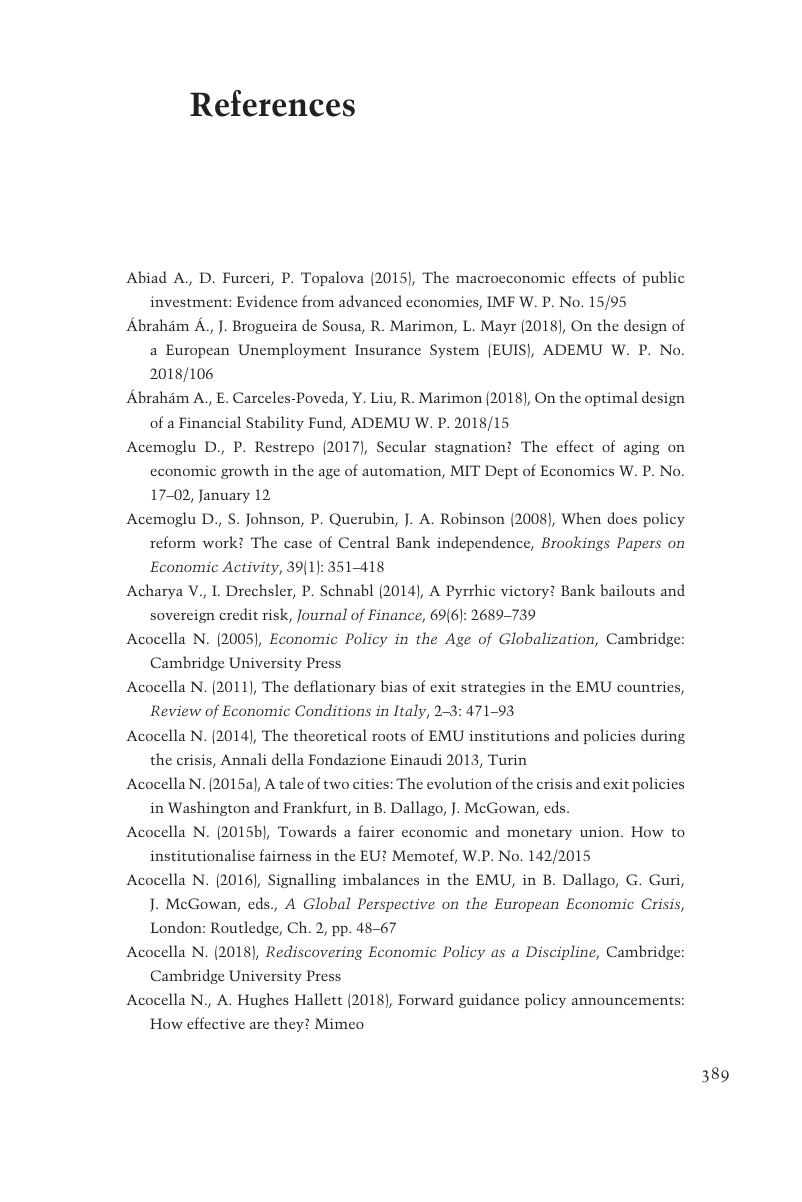Book contents
- The European Monetary Union
- The European Monetary Union
- Copyright page
- Dedication
- Contents
- Figures
- Tables
- Preface
- Acknowledgments
- Abbreviations
- Part I The Historical and Institutional Background
- Part II Institutions and Policies in Action
- Part III Lines of Reform of EMU Institutions
- References
- Index
- References
References
Published online by Cambridge University Press: 19 August 2020
- The European Monetary Union
- The European Monetary Union
- Copyright page
- Dedication
- Contents
- Figures
- Tables
- Preface
- Acknowledgments
- Abbreviations
- Part I The Historical and Institutional Background
- Part II Institutions and Policies in Action
- Part III Lines of Reform of EMU Institutions
- References
- Index
- References
Summary

- Type
- Chapter
- Information
- The European Monetary UnionEurope at the Crossroads, pp. 389 - 458Publisher: Cambridge University PressPrint publication year: 2020



